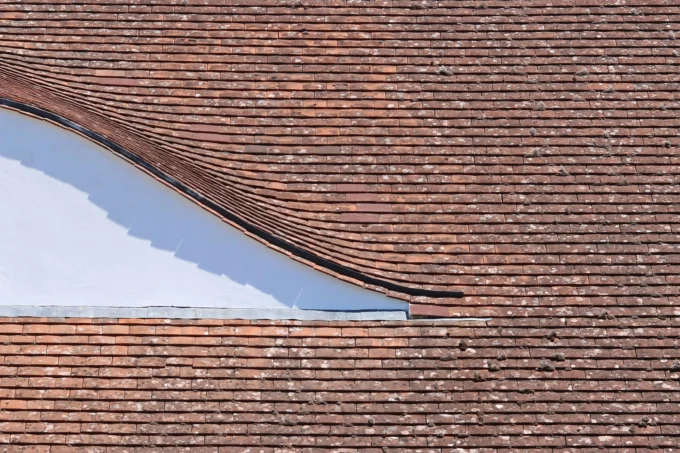- Home
- Articles
- Architectural Portfolio
- Architectral Presentation
- Inspirational Stories
- Architecture News
- Visualization
- BIM Industry
- Facade Design
- Parametric Design
- Career
- Landscape Architecture
- Construction
- Artificial Intelligence
- Sketching
- Design Softwares
- Diagrams
- Writing
- Architectural Tips
- Sustainability
- Courses
- Concept
- Technology
- History & Heritage
- Future of Architecture
- Guides & How-To
- Art & Culture
- Projects
- Interior Design
- Competitions
- Jobs
- Store
- Tools
- More
- Home
- Articles
- Architectural Portfolio
- Architectral Presentation
- Inspirational Stories
- Architecture News
- Visualization
- BIM Industry
- Facade Design
- Parametric Design
- Career
- Landscape Architecture
- Construction
- Artificial Intelligence
- Sketching
- Design Softwares
- Diagrams
- Writing
- Architectural Tips
- Sustainability
- Courses
- Concept
- Technology
- History & Heritage
- Future of Architecture
- Guides & How-To
- Art & Culture
- Projects
- Interior Design
- Competitions
- Jobs
- Store
- Tools
- More
Mastering Blade Performance with the Right Knife Steel Chart

Choosing a knife used to be simple-pick a shape, grab a handle, and get to work. But with the modern explosion of blade materials, one factor now plays a much bigger role: the steel. Understanding steel types is essential if you want a knife that performs well and lasts, but let’s be honest-it’s confusing. That’s why a reliable knife steel chart has become one of the most valuable tools for anyone looking to buy smarter, not just sharper.
Table of Contents
ToggleWhy Steel Really Matters
The blade steel is the soul of a knife. You can have the most ergonomic handle, the best sheath, or the coolest branding-but if the steel doesn’t hold up, the knife won’t either.
Good steel affects:
- How long your knife stays sharp
- How easily it resists rust
- How tough it is when batoning wood or cutting bone
- How fast it can be re-sharpened when dull
Without understanding steel, you’re basically shopping blind. That’s where a knife steel chart becomes essential: it helps make the invisible differences visible.
What a Knife Steel Chart Actually Shows You
A proper knife steel chart isn’t just a list of metals. It breaks down how different steels perform across key areas:
- Edge Retention: How long a blade stays sharp with regular use.
- Toughness: How well the blade resists chips, cracks, and breakage.
- Corrosion Resistance: How it handles exposure to moisture, sweat, salt, and acids.
- Ease of Sharpening: How difficult or time-consuming it is to bring the edge back once it’s dull.
- Hardness (HRC): Usually expressed on the Rockwell scale; a harder blade holds an edge longer but may chip more easily.
With a well-designed knife steel chart, you can compare steels side-by-side and match them with your personal needs and environment.
Steel Performance Is Context-Dependent
There’s no such thing as “the best steel”-only the best for your use case.
- Backpacking in humid climates? You’ll want stainless steel with high corrosion resistance.
- Bushcraft or survival situations? Prioritize toughness and field sharpenability.
- Everyday office carry? Look for a good balance of edge retention and easy maintenance.
- Kitchen prep? Stainless is non-negotiable-no one wants rust in their salad.
That’s why relying on a chart that presents performance data clearly is so helpful-it prevents mismatched expectations.
Common Knife Steels You’ll See on a Chart
Here’s a breakdown of popular steels you’re likely to encounter:

1095
- Type: High-carbon (non-stainless)
- Strengths: Tough, easy to sharpen, cheap
- Drawbacks: Rusts easily without oiling
- Best for: Bushcraft, survival
S30V / S35VN
- Type: Premium stainless
- Strengths: Excellent edge retention, corrosion resistance
- Drawbacks: Harder to sharpen
- Best for: EDC, high-end folders
VG-10
- Type: Japanese stainless
- Strengths: Fine edge, decent retention
- Drawbacks: Can be brittle under stress
- Best for: Kitchen knives, light EDC
14C28N
- Type: Mid-range stainless
- Strengths: Balanced performance, affordable
- Drawbacks: Slightly less edge retention than premium steels
- Best for: Beginner EDC, camping
M390 / 20CV
- Type: Super-steel stainless
- Strengths: Long-lasting edge, corrosion resistance
- Drawbacks: Expensive, hard to sharpen
- Best for: Premium folding knives, collectors
A knife steel chart like the one at New.Knife.Day will show you these stats side-by-side with comparison graphs, usage notes, and often real-world feedback.
How to Use the Chart When Knife Shopping
You don’t need to become a metallurgist to use a knife steel chart effectively. Here’s a basic strategy:
- Identify your priorities. Do you want max sharpness, rust resistance, or something easy to maintain?
- Look for high ratings in that category. Charts will often use stars or a 1-10 scale.
- Balance the trade-offs. Super-hard steels hold an edge but chip easily. Stainless steels resist rust but might need more frequent sharpening.
- Match your price point. Some high-performance steels come with high price tags. Others, like 14C28N or D2, offer solid value.
When used properly, a knife steel chart turns a stressful purchase into a confident one.
The Myth of “Super Steels”
There’s a lot of buzz around steels like CPM S90V or ZDP-189-ultra-premium alloys with incredible wear resistance. But here’s the catch: they’re not for everyone.
Unless you’re cutting rope and cardboard for hours daily or want a collector’s piece, you may never need that level of edge retention. And if you don’t own a diamond stone, good luck sharpening them on the go.
Sometimes, it’s better to choose a simpler steel you’ll enjoy maintaining over a “super steel” you’ll dread resharpening.
Not All Charts Are Equal
Some knife steel charts are filled with marketing fluff or incomplete data. The one at New.Knife.Day stands out because it’s:
- Unbiased and data-driven
- Easy to scan visually
- Backed by real-world performance insights
- Regularly updated with new steels and comparisons
That’s why both beginners and knife enthusiasts use it-not just to learn, but to shop smarter.
Beyond Steel: Other Factors Still Matter
Of course, steel isn’t the whole story. Handle material, ergonomics, blade shape, weight, and carry style all influence how you interact with your knife daily.
But understanding steel is the foundation. Once you’ve nailed that down, everything else becomes a matter of preference and fit.
A Chart That Cuts Through Confusion
Buying a knife shouldn’t feel like gambling with expensive gear. Whether you’re picking out a new EDC blade, a survival knife, or your next kitchen favorite, understanding what’s in the steel makes all the difference.
That’s why the knife steel chart from New.Knife.Day is more than just a table-it’s a roadmap for smart buying. It strips away the guesswork and replaces it with clarity, letting you make a choice based on performance, not pressure.
Because the right steel doesn’t just sharpen well-it makes everything else about your knife better.
Submit your architectural projects
Follow these steps for submission your project. Submission FormLatest Posts
The Collaboration Between Architects and Steel Suppliers: Why It Matters
Architecture transforms vision into reality through countless partnerships, but one relationship often...
Step-By-Step Guidance For Seamless Moves to Another Country
Moving abroad is a big project, but it does not have to...
Remembering Frank Gehry: What His 96 Years Teach Us
Frank Gehry’s passing at the age of 96 marks a significant moment...
Furniture Movers by the Hour: Complete Guide to Hourly Moving Services in 2025
Introduction Furniture movers by the hour are professional moving services that charge...












Leave a comment